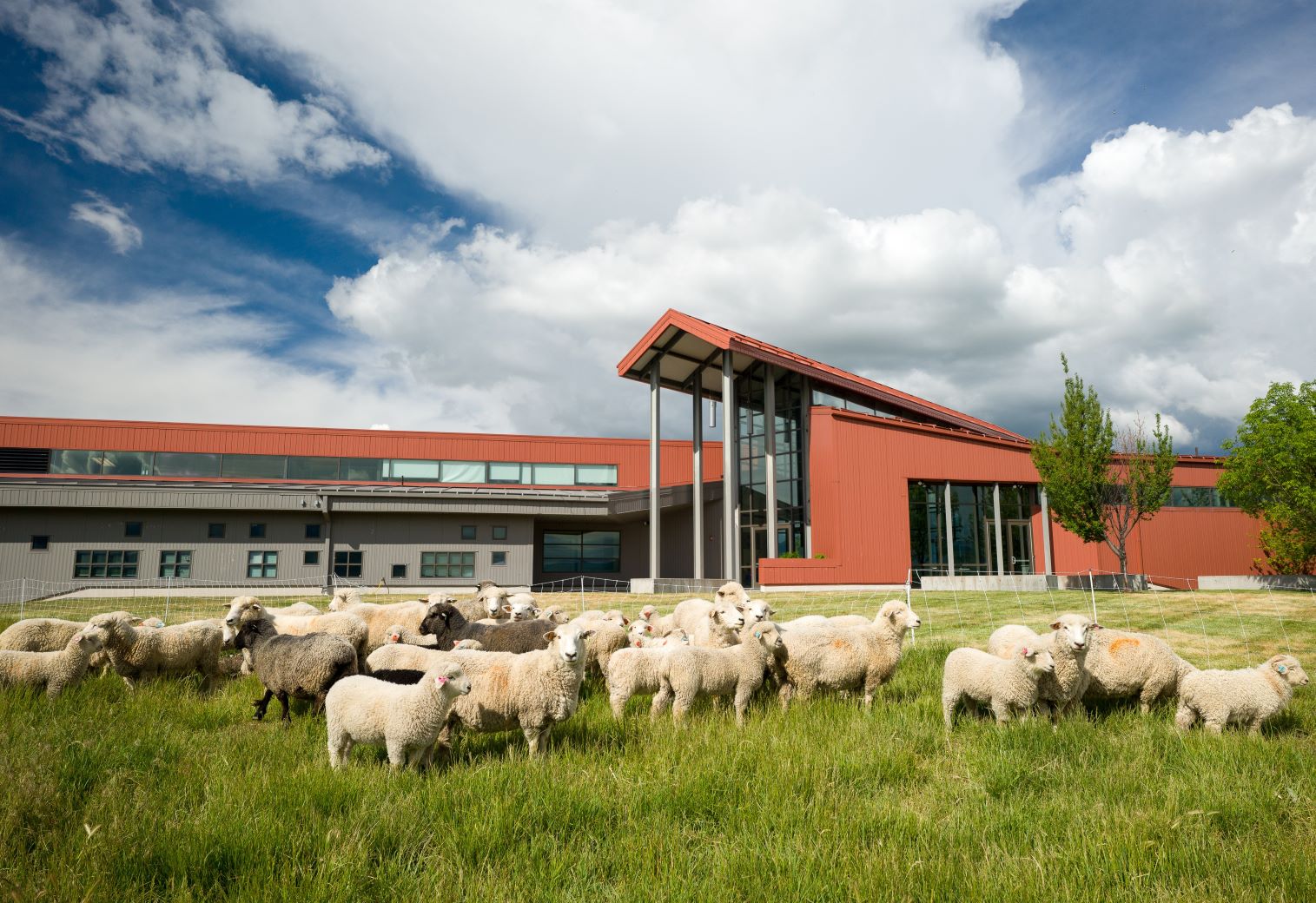 Listen to this story.
Listen to this story.
Hillyard

Utah State University photo by Levi Sim
While awaiting a 106,000-square-foot home for the new Utah State University College of Veterinary Medicine now under construction, the veterinary program is spread across campus in four buildings, including the Hillyard Animal Teaching Research Center, shown.
Having just a matter of weeks to decide admissions to its new veterinary college opening Aug. 11, Utah State University began accepting applications in late March, drawing more than 100 in the first week or so, according to the dean.
The school in Logan, Utah, is running nearly one year behind the standard timeline to accept veterinary school applications because it was waiting for a "letter of reasonable assurance" indicating that it's on target for accreditation by the American Veterinary Medical Association Council on Education. Programs need to be accredited or on track for accreditation in order for their students to access federal financial aid, including loans.
Utah State's letter arrived on March 25, the dean, Dr. Dirk Vanderwall, said.
With no time to waste, on that same day, the college emailed the 350 people on its list of prospective applicants, opened an online portal for applications, "and soon after, started to receive applications and has continued to receive applications," Vanderwall told the VIN News Service in an interview by video call last week.
"It's safe to say our applicant pool was poised and ready," he said, his face lit by a broad smile.
Kylee Eldredge certainly was. An undergraduate at Utah State, Eldredge had been inquiring with the school's admissions team monthly since January. Almost immediately after the long-awaited news landed in her inbox at 5:30 p.m., she dove into the application, submitting it at 2 a.m. She was in good company.
"I know a lot of people who applied that night," said Eldredge, a bioveterinary science major whose goal of becoming a veterinarian is shared by many classmates. In fact, the application system crashed at times, apparently overwhelmed, she said.
Utah State is reviewing applications on a rolling basis, with a goal of making "as many decisions as possible" by April 15, Vanderwall said. That's the commitment deadline for applicants accepted by most, if not all, other veterinary schools in the United States. However, Vanderwall added, Utah anticipates continuing to accept applications beyond April 15, wrapping up the selection process by June 1. Applicants accepted by Utah must commit within seven days.
The program will be the state's first veterinary school, although Utah has, since 2012, operated a "2+2" program with Washington State University College of Veterinary Medicine. Under the arrangement, Utah provides two years of veterinary education before sending students to Washington, about 600 miles away, to complete the final two years of their training.
One of five schools that currently partner with existing veterinary schools, Utah State is the first in more than 20 years to expand its offering to a degree-granting program. Oregon State University opened a full veterinary college in 2003 after a similar collaboration with Washington State.
Utah's 2+2 with Washington will end when the class that entered the program in fall 2024 graduates in 2028.
In its four-year veterinary college, Utah plans to enroll 40 students this year, increasing to 80 next year, Vanderwall said. That compares with about 30 per year in the joint program with Washington.
The expansion will enable more Utah residents to access an in-state veterinary school tuition rate, which is much lower than the charge to nonresidents, as is standard at public institutions.
First-year tuition at Utah State will be $27,658 for residents and $52,686 for nonresidents. (There's also a fee of about $510 per year, the exact amount depending on the student's number of credit hours.) Including housing, food, transportation, books, supplies and miscellaneous expenses, the full cost of attendance for the first year is projected to be $42,124 for residents and $67,152 for nonresidents.
Eldredge, the Utah State undergraduate and a lifelong resident of the state, already has one veterinary school acceptance in hand, from Midwestern University. Tuition and fees at the private school in Arizona are markedly higher — about $74,000 per year.
With the decision deadline looming, Eldredge plans to accept Midwestern's offer if she doesn't receive an offer from Utah. But given a choice, she would prefer to stay in Utah for a variety of reasons — not the least being the resident tuition rate. "Money is probably the biggest factor for me," she said.
The resident rate at Utah State will be available, too, to select students from neighboring Nevada, which does not have a veterinary school. Vanderwall said that state's government has agreed to pay the difference between resident and nonresident tuition for a total of 70 Nevadans starting this fall through fall 2030. Students who receive the subsidies must return to Nevada within a year of graduating to practice for four years.
Bolstering its veterinary community is a chief motivation for Utah to establish the veterinary college. According to Vanderwall, alumni of Utah's 2+2 program are located in 25 of the state's 29 counties, which he said "undoubtedly factored into the state support for the four-year program."
Eldredge aspires to return one day to her rural hometown of Roosevelt, Utah, to open a mixed animal emergency practice. She said she witnessed the need while working as a veterinary assistant in a clinic that sometimes had to turn away animals that needed help urgently.
"You have to drive to the emergency clinic three hours away," she said. "Oftentimes, the patients wouldn't make it. It fueled my thinking that I need to come back here and help the community that raised me. It made me really sad that we couldn't serve our own community."
Utah State anticipates that its 40-student inaugural veterinary class will be composed of 25 Utah residents and 15 from out of state, most of the latter likely from Nevada, Vanderwall said. When enrollment bumps up to 80 next year, half will be in-staters and the other half, out-of-staters, he said.
Accommodating a doubled class size will be possible upon completion in 2026 of a $78 million, 106,000-square-foot complex that will house the veterinary program, which currently is spread across the campus in four buildings.
Vanderwall said the state government has, since July 2022, committed $21 million annually to the veterinary program. Most of the early funding has covered construction. Once that's done, the state support will contribute to paying operating costs, according to the dean.
One facility the college won't have is a teaching hospital. Like most veterinary schools established in the U.S. in the past 20 years, Utah's will arrange for clinical training off-site in what's known as distributed or distributive learning. Vanderwall said Utah has begun the process of identifying practices willing to host students for clinical rotations, which take place in their final year of training.
The college also is in the process of filling out its faculty and staff. Vanderwall said the program has 25 full-time and seven adjunct faculty at present; he expects that the full-time roster ultimately will reach 45 to 50.
Utah is one of two new veterinary schools in the U.S. scheduled to open this fall. The other is at Rowan University in New Jersey. Together, they will bring the total number of veterinary schools in the country to 36.
In the planning stages are eight more that project to open in 2026 and a ninth in 2027.